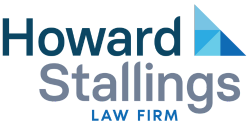Chapter 7 bankruptcy may be used by businesses that wish to liquidate and terminate their business. Under Chapter 7 bankruptcy, the company usually stops all its operations and goes completely out of business. A trustee is appointed to liquidate (sell) the company’s assets and the money is used to pay off debt. If the business is owned as a sole proprietorship, then the sole proprietor is eligible to receive a discharge of his or her business and non-business debts.
Under Chapter 11, a debtor has the opportunity to restructure its secured debt payments; to reject burdensome leases; to pay tax obligations over time; to sell unneeded assets; to pay unsecured claims at a discount, and to have claims determined by the court. Unlike a Chapter 7 case, the appointment of a trustee to oversee the case is the exception, not the rule. In a Chapter 11, current management of the debtor operates the debtor as a “debtor-in-possession”, although operations are strictly supervised by the Bankruptcy Court. The theory behind Chapter 11 is that the business can make greater payments to its creditors through continuing operations than the creditors would receive in a Chapter 7 liquidation. The culmination of a Chapter 11 case is a Chapter 11 plan.
A Chapter 11 plan is usually filed by management of the debtor, although creditors sometimes are permitted to file a plan. The plan separates claims in separate classes, with similar claims having their own class. Generally, claims consist of administrative claims (claims incurred after the case is filed); certain priority claims, which are comprised of claims that Congress decided should have special treatment under the Bankruptcy Code; secured claims (claims for which property of the debtor serves as collateral); unsecured claims; and equity. The plan will classify each of these types of claims and propose treatment for them. Creditors are then given a chance to vote on the plan. If the requisite number of creditors vote in favor of the plan and the plan otherwise complies with the requirements of the Bankruptcy Code, the plan is “confirmed” by the Court and the confirmed plan serves to modify treatment of the various claims in the case. Once confirmed, the debtor is responsible for making payments and otherwise performing its obligations under the plan.
Since a corporation is a legal entity different and distinct from its shareholders, the bankruptcy of a shareholder does not affect the corporation. The bankrupt shareholder’s shares in the corporation, however, are an asset of his bankruptcy estate and may be sold in his individual bankruptcy case.
Choosing a strategy in bankruptcy involves risk and a careful analysis of possible results of filing. In some instances, it may be better not to file bankruptcy or to use one of several state law alternatives in resolving company debt. Some strategies may involve a sale of assets either prior to or during the bankruptcy, so that a successor company will carry on the debtor’s business. It is advisable to contact an experienced business bankruptcy attorney at Howard Stallings to discuss your options.
Retirement plans vary dramatically from company to company. Some companies have “unfunded plans,” which are a general obligation of the business similar to other company obligations. Properly established and funded plans under ERISA are generally protected and are not included as property of the bankruptcy estate of the Company. In ERISA- qualified plans, the law requires an employer to keep retirement money in a trust separate from the employer’s own funds. However, if your employer’s business is having problems, it may be worth your effort to ask questions about the security of your retirement money.
Yes, but it is generally inadvisable since a company does not receive a bankruptcy discharge. It is usually better to start over with a new company, sometimes after purchasing assets through a bankruptcy sale from the bankrupt corporation. On rare occasions, a company may purchase the corporate “shell” of a company eligible to sell stock on a listed exchange to avoid going through the registration process. In any event, one would want to change the corporate name to avoid the stigma of the previous business’s failure.
In any bankruptcy, principles of law regarding creditors’ claims come into play. Although bankruptcy is intended to provide relief to debtors, it balances the debtor’s interest against those of creditors to whom money is owed. Selecting the best course of action should be based on the probable results, after assessing legal risks. It is always in your best interest to seek the advice and expertise of an experienced bankruptcy lawyer to handle your company’s bankruptcy needs. An attorney can assist with deciding whether to file bankruptcy and which chapter to file and can also assist in filing the bankruptcy and creating a re-organization plan. Contact Howard Stallings today.






